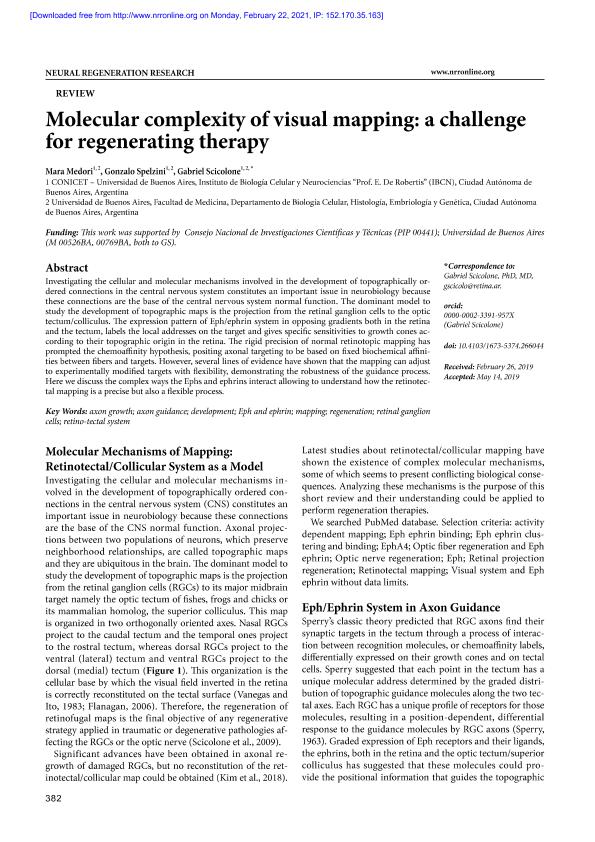Artículo
Molecular complexity of visual mapping: A challenge for regenerating therapy
Fecha de publicación:
09/2019
Editorial:
Shenyang Editorial Dept Neural Regeneration Res
Revista:
Neural Regeneration Research
ISSN:
1673-5374
Idioma:
Inglés
Tipo de recurso:
Artículo publicado
Clasificación temática:
Resumen
Investigating the cellular and molecular mechanisms involved in the development of topographically ordered connections in the central nervous system constitutes an important issue in neurobiology because these connections are the base of the central nervous system normal function. The dominant model to study the development of topographic maps is the projection from the retinal ganglion cells to the optic tectum/colliculus. The expression pattern of Eph/ephrin system in opposing gradients both in the retina and the tectum, labels the local addresses on the target and gives specific sensitivities to growth cones according to their topographic origin in the retina. The rigid precision of normal retinotopic mapping has prompted the chemoaffinity hypothesis, positing axonal targeting to be based on fixed biochemical affinities between fibers and targets. However, several lines of evidence have shown that the mapping can adjust to experimentally modified targets with flexibility, demonstrating the robustness of the guidance process. Here we discuss the complex ways the Ephs and ephrins interact allowing to understand how the retinotectal mapping is a precise but also a flexible process.
Archivos asociados
Licencia
Identificadores
Colecciones
Articulos(IBCN)
Articulos de INST.DE BIOLO.CEL.Y NEURCS."PROF.E.DE ROBERTIS"
Articulos de INST.DE BIOLO.CEL.Y NEURCS."PROF.E.DE ROBERTIS"
Citación
Medori, Mara Solange; Spelzini, Gonzalo Nicolás; Scicolone, Gabriel Edgardo; Molecular complexity of visual mapping: A challenge for regenerating therapy; Shenyang Editorial Dept Neural Regeneration Res; Neural Regeneration Research; 15; 3; 9-2019; 382-389
Compartir
Altmétricas




